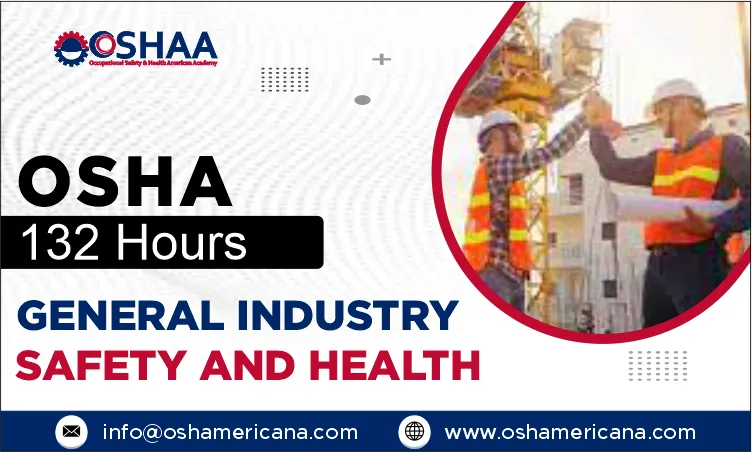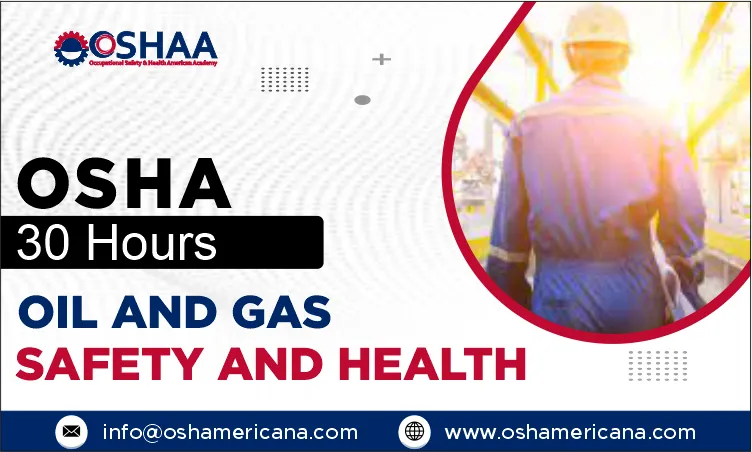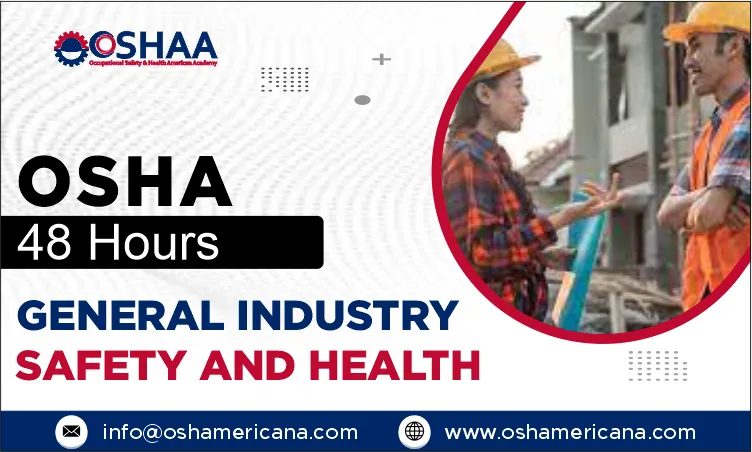When it comes to workplace safety and health, comprehensive training is essential to ensure the well-being of employees and compliance with regulatory standards. The OSHA 132-Hour General Industry Safety and Health course stands out as an advanced training program designed to equip professionals with in-depth knowledge and skills across a wide spectrum of industrial environments.
The OSHA 132-Hour General Industry Safety and Health course is an intensive training program that goes beyond the basics. It delves deep into the intricacies of occupational safety and health within general industry settings. Unlike shorter OSHA courses, which typically cover fundamental concepts and specific hazards, this 132-hour course provides a thorough exploration of safety protocols, regulatory compliance, and risk management strategies applicable across diverse industrial sectors.
The OSHA 132-Hour General Industry Safety and Health course is ideal for safety managers, health professionals, compliance officers, and anyone responsible for safety oversight in general industry sectors. It’s suitable for professionals looking to deepen their understanding of workplace safety, expand their career opportunities, and contribute to safer, more efficient workplaces.
In conclusion, the OSHA 132-Hour General Industry Safety and Health course is a comprehensive training program designed to empower professionals with advanced safety knowledge and skills applicable across various industrial settings. By investing in this course, participants not only enhance their safety expertise but also play a crucial role in ensuring the well-being of employees and maintaining regulatory compliance within their organizations.
OSHA 132-Hour General Industry Safety and Health
Study Units
Learning Outcomes
1. Introduction to OSHA and General Industry Safety
- Understand the role and mission of OSHA in regulating workplace safety and health.
- Identify key OSHA standards and regulations applicable to general industry settings.
- Explain employer and employee rights and responsibilities under OSHA guidelines.
2. Walking and Working Surfaces
- Identify and assess hazards associated with walking and working surfaces in industrial environments.
- Implement controls and procedures to minimize the risk of slips, trips, and falls.
- Conduct inspections and audits to ensure compliance with OSHA standards related to walking and working surfaces.
3. Electrical Safety Standards
- Recognize electrical hazards in the workplace and understand electrical safety standards and regulations.
- Implement safe work practices and procedures for working with electricity and electrical equipment.
- Conduct electrical safety audits and inspections to mitigate risks and ensure compliance with OSHA standards.
4. Hazard Communication
- Interpret OSHA’s Hazard Communication Standard (HCS) and its requirements for chemical safety in the workplace.
- Develop and implement a hazard communication program, including chemical labeling and Safety Data Sheets (SDS).
- Train employees on hazard communication protocols and procedures for handling hazardous chemicals safely.
5. Personal Protective Equipment (PPE)
- Identify workplace hazards requiring PPE and select appropriate PPE based on hazard assessment.
- Ensure proper use, maintenance, and storage of PPE to maximize effectiveness.
- Conduct PPE training to educate employees on its use and importance in protecting against workplace hazards.
6. Fire Safety and Prevention
- Develop and implement fire prevention plans and emergency procedures specific to the workplace.
- Conduct fire risk assessments and drills to prepare employees for emergencies.
- Ensure compliance with OSHA standards related to fire safety and prevention measures.
7. Machine Guarding and Lockout/Tagout
- Identify machine hazards and implement machine guarding strategies to protect workers from injuries.
- Develop and implement lockout/tagout procedures to control hazardous energy during maintenance and servicing of equipment.
- Train employees on safe work practices for machine operation and lockout/tagout procedures.
8. Ergonomics
- Recognize ergonomic hazards in the workplace and understand the principles of ergonomic design and workstation setup.
- Implement ergonomic controls and adjustments to minimize musculoskeletal disorders and injuries.
- Conduct ergonomic assessments and recommend improvements to enhance worker comfort and productivity.
9. Hazardous Materials and Waste Management
- Identify hazardous materials and substances used in the workplace and understand their health and environmental risks.
- Implement safe handling, storage, and disposal practices for hazardous materials and waste.
- Ensure compliance with OSHA’s Hazardous Waste Operations and Emergency Response (HAZWOPER) standards where applicable.
10. Industrial Hygiene and Occupational Health
- Conduct workplace exposure assessments to identify and evaluate chemical, physical, and biological hazards.
- Implement control measures to minimize occupational health risks and exposures.
- Monitor and maintain occupational health programs to protect worker health and well-being.
11. Confined Spaces
- Identify confined spaces in the workplace and understand the hazards associated with confined space entry.
- Develop and implement confined space entry procedures, including permit-required confined space protocols.
- Train employees on confined space hazards, entry procedures, and emergency rescue protocols.
12. Emergency Response and Preparedness
- Develop and implement emergency response plans (ERP) specific to workplace hazards and scenarios.
- Conduct emergency drills and simulations to evaluate response effectiveness and readiness.
- Ensure employees are trained and capable of responding to emergencies promptly and safely.
13. Accident Investigation and Recordkeeping
- Conduct thorough accident investigations to determine root causes and contributing factors.
- Implement corrective actions based on investigation findings to prevent recurrence.
- Maintain accurate accident records and documentation in compliance with OSHA recordkeeping requirements.
14. Health and Safety Management Systems
- Understand the principles and components of effective safety and health management systems.
- Develop and implement safety management systems tailored to the needs of the organization.
- Continually assess and improve safety performance through audits, reviews, and corrective actions.
15. Safety and Health Training Techniques
- Design and deliver effective safety and health training programs for employees at all levels.
- Utilize adult learning principles and interactive training techniques to enhance engagement and knowledge retention.
- Evaluate training effectiveness and adjust programs as needed to meet organizational safety goals.
16. Special Topics and Emerging Issues
- Stay updated on emerging safety and health issues, trends, and regulations affecting the general industry.
- Address special topics such as workplace violence prevention, pandemic preparedness, and technological advancements in safety.
- Proactively assess and mitigate new risks and challenges through continuous learning and adaptation.
These learning outcomes are designed to equip participants with comprehensive knowledge, skills, and competencies necessary to manage safety and health effectively in general industry settings while ensuring compliance with OSHA standards and promoting a culture of safety excellence.
- Comprehensive Knowledge Base: Gain in-depth understanding of OSHA regulations and standards applicable to general industry, ensuring compliance and reducing the risk of citations and penalties.
- Advanced Hazard Recognition and Risk Assessment Skills: Develop proficiency in identifying workplace hazards and conducting thorough risk assessments, allowing for effective hazard control and prevention strategies.
- Enhanced Safety Management Competence: Acquire advanced skills in safety management systems (SMS), including emergency preparedness, incident investigation, and safety audits, fostering a safer work environment.
- Specialized Training in Industrial Hygiene and Occupational Health: Learn to assess and manage workplace exposures to chemical, biological, and physical hazards, safeguarding employee health and well-being.
- Effective Safety Training Techniques: Master techniques for designing and delivering engaging safety training programs, ensuring comprehensive understanding and compliance among employees.
- Improved Emergency Response Preparedness: Develop and implement robust emergency response plans (ERP) and procedures, enhancing readiness and reducing the impact of workplace emergencies.
- Focus on Ergonomics and Workplace Design: Implement ergonomic principles to minimize musculoskeletal disorders and optimize workplace design for improved worker comfort and productivity.
- Compliance with Hazard Communication and PPE Standards: Ensure adherence to OSHA’s Hazard Communication Standard (HCS) and proper selection, use, and maintenance of Personal Protective Equipment (PPE), mitigating risks associated with hazardous materials.
- Career Advancement Opportunities: Earn a recognized certification that demonstrates advanced safety knowledge and leadership capabilities, enhancing career prospects in safety management and compliance roles.
- Cost Savings and Operational Efficiency: Implementing effective safety measures and compliance with regulations can lead to reduced insurance premiums, lower worker compensation claims, and improved operational efficiency.
- Promotion of Safety Culture: Lead initiatives to promote a culture of safety excellence within your organization, fostering employee engagement and reducing workplace incidents.
- Environmental Stewardship: Learn best practices for environmental protection and sustainability within general industry operations, contributing to corporate social responsibility goals.
The “OSHA 132-Hour General Industry Safety and Health” course equips professionals with advanced skills and knowledge essential for managing safety effectively in diverse industrial settings. By investing in this comprehensive training, participants not only enhance workplace safety but also contribute to organizational success through improved compliance, operational efficiency, and employee well-being. This course is invaluable for individuals committed to advancing their careers in safety management and ensuring a safe and healthy workplace environment for all employees.
The target audience for the “OSHA 132-Hour General Industry Safety and Health” course includes professionals across various roles within general industry settings who are responsible for safety management, compliance, and workplace health.
Target Audience
- Safety Managers and Directors:
- Responsible for overseeing safety programs and ensuring compliance with OSHA regulations.
- Develop and implement safety policies, procedures, and training programs.
- Conduct safety audits, inspections, and incident investigations.
- Health and Safety Professionals:
- Specialize in occupational health and safety within general industry sectors.
- Conduct risk assessments, exposure monitoring, and health hazard evaluations.
- Implement control measures to mitigate workplace hazards and ensure employee safety.
- Compliance Officers:
- Ensure organizational compliance with OSHA regulations and standards.
- Conduct regulatory audits, inspections, and assessments.
- Develop and maintain documentation to demonstrate compliance efforts.
- Environmental Health Specialists:
- Focus on environmental protection, sustainability, and workplace health.
- Manage hazardous materials handling, waste management, and pollution prevention.
- Implement environmental compliance programs and initiatives.
- Safety Coordinators and Supervisors:
- Implement safety procedures and protocols on the shop floor or within operational areas.
- Conduct safety training, toolbox talks, and safety meetings.
- Monitor workplace conditions and enforce safety policies to prevent incidents.
- Industrial Hygienists:
- Assess and control workplace exposures to chemical, physical, and biological hazards.
- Recommend engineering controls, personal protective equipment (PPE), and administrative measures to minimize health risks.
- Operations and Facility Managers:
- Oversee day-to-day operations and ensure safety considerations are integrated into operational practices.
- Collaborate with safety professionals to address safety concerns and implement corrective actions.
- Support safety initiatives and promote a culture of safety among employees.
- Human Resources Professionals:
- Ensure employee training and development align with safety and health requirements.
- Manage personnel issues related to safety policies, procedures, and compliance.
- Facilitate communication between management and employees regarding safety concerns and initiatives.
- Risk Managers and Insurance Professionals:
- Assess organizational risks related to workplace safety and health.
- Implement risk mitigation strategies to reduce incidents and improve workplace safety metrics.
- Collaborate with safety professionals to ensure insurance requirements are met and claims are managed effectively.
The “OSHA 132-Hour General Industry Safety and Health” course is designed to benefit a diverse range of professionals committed to enhancing safety, health, and compliance within general industry settings. Whether you are a safety manager overseeing comprehensive safety programs or a health professional focusing on occupational health hazards, this course provides essential knowledge and skills to effectively manage workplace safety and ensure regulatory compliance. By enrolling in this course, participants can advance their careers, contribute to organizational success, and foster a culture of safety excellence within their respective industries.







